My publications:
-
Long-range corrections for molecular simulations with three-body interactions.
I. Nitzke, S. V. Lishchuk, J. Vrabec.
Journal of Chemical Theory and Computation, 21, 1 (2025).
[abstract] [doi] [pdf]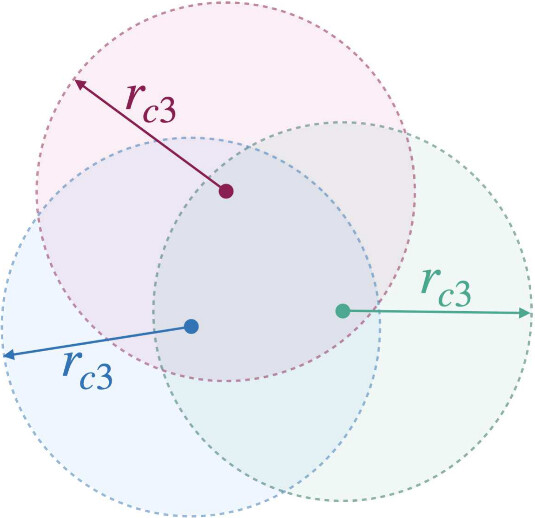
Due to their computational intensity, long-range corrections of three-body interactions are particularly desirable, while there is no consensus of how to devise a cutoff scheme. A cutoff correction scheme for three-body interactions in molecular simulations is proposed that does not rest on complex integrals and can be implemented straightforwardly. For a limited number of configurations, the three-body interactions are evaluated for a desired and a very large cutoff radius to determine the required corrections.
-
Demulsification of Pickering emulsions: Advances in understanding mechanisms to applications.
G. Hernandez-Rodriguez, E. Tenorio-Garcia, R. Ettelaie, S. V. Lishchuk, D. Harbottle, B. S. Murray, A. Sarkar.
Soft Matter, 20, 7344 (2024).
[abstract] [doi] [pdf]Pickering emulsions are ultra-stable dispersions of two immiscible fluids stabilized by solid or microgel particles rather than molecular surfactants. Although their ultra-stability is a signature performance indicator, often such high stability hinders their demulsification, i.e., prevents the droplet coalescence that is needed for phase separation on demand, or release of the active ingredients encapsulated within droplets and/or to recover the particles themselves, which may be catalysts, for example. This review aims to provide theoretical and experimental insights on demulsification of Pickering emulsions, in particular identifying the mechanisms of particle dislodgment from the interface in biological and non-biological applications. Even though the adhesion of particles to the interface can appear irreversible, it is possible to detach particles via (1) alteration of particle wettability, and/or (2) particle dissolution, affecting the particle radius by introducing a range of physical conditions: pH, temperature, heat, shear, or magnetic fields; or via treatment with chemical/biochemical additives, including surfactants, enzymes, salts, or bacteria. Many of these changes ultimately influence the interfacial rheology of the particle-laden interface, which is sometimes underestimated. There is increasing momentum to create responsive Pickering particles such that they offer switchable wettability (demulsification and re-emulsification) when these conditions are changed. Demulsification via wettability alteration seems like the modus operandi whilst particle dissolution remains only partially explored, largely dominated by food digestion-related studies where Pickering particles are digested using gastrointestinal enzymes. Overall, this review aims to stimulate new thinking about the control of demulsification of Pickering emulsions for release of active ingredients associated with these ultra-stable emulsions.
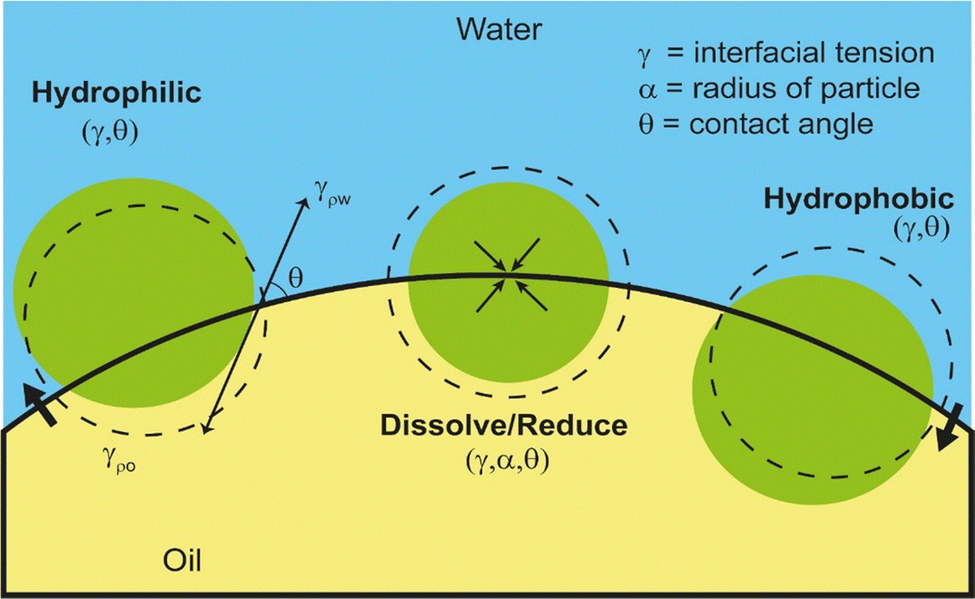
-
Electromagnetic theory of double Fano resonances in plasmonic nanostructures and metamaterials.
S. V. Lishchuk.
Physical Review B, 106, 045404 (2022).
[abstract] [doi]The ab initio electromagnetic theory of Fano resonances in resonant plasmonic nanostructures and metamaterials, developed by Gallinet and Martin [Phys. Rev. B 83, 235427 (2011)], is generalized to the case of double Fano resonances. A system is considered in which two uncoupled non-radiative modes interfere with a broad radiative mode driven by incident electromagnetic radiation. Feshbach–Fano partitioning formalism is employed to recover the formula for the double Fano resonance spectral line shape suggested by Fano phenomenologically in his original work, and derive the exact microscopic expressions for the parameters governing the optical response of the system.
-
Bulk viscosity of gaseous argon from molecular dynamics simulations.
L. Alboul, S. V. Lishchuk.
Physical Review E, 105, 054135 (2022).
[abstract] [doi]The bulk viscosity of dilute argon gas is calculated using molecular dynamics simulations in the temperature range 150–500 K and is found to be proportional to density squared in the investigated range of densities 0.001–1 kg m-³. A comparison of the results obtained using Lennard–Jones and Tang–Toennies models of pair interaction potential reveals that the value of the bulk viscosity coefficient is sensitive to the choice of the pair interaction model. The inclusion of the Axilrod–Teller–Muto three-body interaction in the model does not noticeably affect the values of the bulk viscosity in dilute states, contrary to the previously investigated case of dense fluids.
-
Models of surface viscosities of particle-laden fluid interfaces.
S. V. Lishchuk.
“Physics in food manufacturing” (Editors: M. J. Povey, M. J. Holmes, S. Rafiq, E. Simone, M. Rappolt, M. Francis), IOP Publishing (2020).
[abstract] [doi]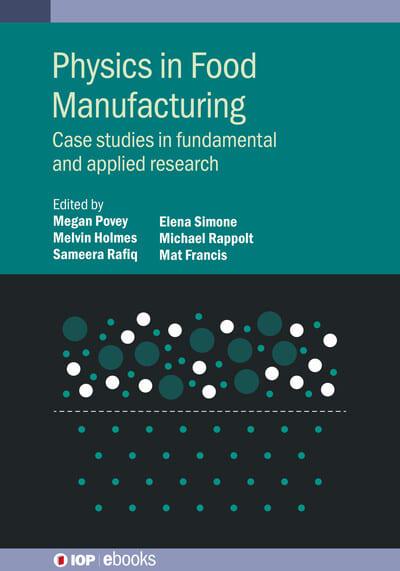
This book is the first authoritative text on the role that physicists play in solving the inherently multidisciplinary science and technology challenges in food manufacturing. Topics range from designing safe, nutritious and great-tasting foods to the process technology and manufacturing know-how needed to deliver compelling product innovation. The book provides a foundational resource for the transformation of engineering and materials characterisation in the food and pharmaceuticals industries. It is an essential reference for interdisciplinary physical scientists, food/nutrition scientists and engineers working in academic research, government labs and industry, and is also a valuable resource for R&D staff and product engineers working for suppliers of specialist instrumentation and equipment to the food processing industry.
...In chapter 4 Sergey Lishchuk outlines computational and mathematical models for the rheology of the complex heterogeneous materials that make up food.
-
Detachment work of prolate spheroidal particles from fluid droplets: role of viscous dissipation.
S. V. Lishchuk, R. Ettelaie.
Soft Matter, 16, 4049 (2020).
[abstract] [doi]The force–displacement curve for removal of an elongated solid particle from the surface of liquid droplets or gas bubbles is calculated and compared to our previous reported results for spherical particles. The surface adsorption energy for prolate particles is known to be larger than those of spheres. We show that in fact the minimum possible work done upon removal of an elongated particle from surface can be less than that for a sphere. This result is obtained when the dissipation of interfacial energy, stored in the fluid film, attaching the particles to the surface during their displacement, is properly accounted for. This dissipation is unavoidable, even if the particles are removed infinitely slowly. Once the particle actually leaves the surface, the formed liquid bridge relaxes thus dissipating any stored interfacial energy as the surface returns to its original undistorted state. The difference between the work of removal of a particle from surface and its adsorption energy is seen to become increasingly larger with smaller particle to droplet size ratios. For example, for a size ratio of 1:100, the work of removal is 1.93 times greater than the adsorption energy. However, we also find that for any given size ratio, there is a value of particle aspect ratio for which the work of removal of particles (combined dissipated and adsorbed energy) attains its minimum value.
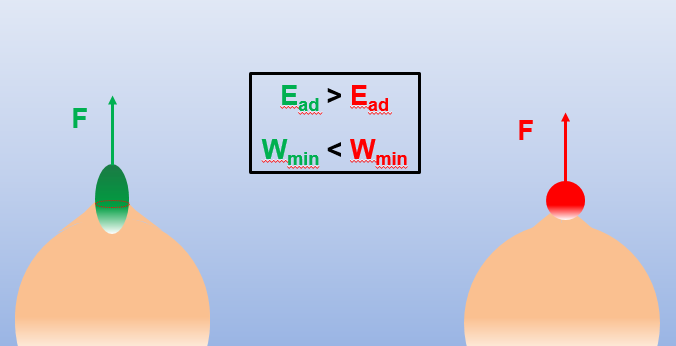
-
Liquid marble-derived solid-liquid hybrid superparticles for CO2 capture.
X. Rong, R. Ettelaie, S. V. Lishchuk, H. Cheng, N. Zhao, F. Xiao, F. Cheng, H. Yang.
Nature Communications, 10, 1854 (2019).
[abstract] [doi] [pdf]The design of effective CO2 capture materials is an ongoing challenge. Here we report a concept to overcome current limitations associated with both liquid and solid CO2 capture materials by exploiting a solid-liquid hybrid superparticle (SLHSP). Liquid marbles are fabricated by assembling hydrophobic silica nanoparticles on a liquid droplet surface, and co-assembly of hydrophilic silica nanoparticles and tetraethylenepentamine within the interior of the resulting droplets. The strong interfacial adsorption force and the strong interactions between amine and silica are identified to be key elements for high robustness. The developed SLHSPs exhibit excellent CO2 sorption capacity, high sorption rate, long-term stability and reduced amine loss in industrially preferred fixed bed setups. The outstanding performances are attributed to the unique structure which hierarchically organizes the liquid and solid at microscales.
-
Long range corrections in liquid-vapor interface simulations.
S. V. Lishchuk, J. Fischer.
Journal of Chemical Physics, 149, 091102 (2018).
[abstract] [doi] [pdf]Long range corrections (lrc) for the potential energy and for the force in planar liquid-vapor interface simulations are considered for spherically symmetric interactions. First, it is stated that for the Lennard-Jones (LJ) fluid the lrc for the energy Δu of Janeček [J. Phys. Chem. B 110, 6264 (2006)] is the same as that of Lotfi et al. [Mol. Simul. 5, 233 (1990)]. Second, we present the lrc for the force ΔF for any spherical symmetric interaction as a derivative of Δu plus a surface integral over the cut-off sphere by using the extended Leibniz rule of Flanders [Am. Math. Monthly 80, 615 (1973)]. This ΔF corrects the incomplete lrc Δ1F of Lotfi et al. and agrees with the result of Janeček obtained by direct averaging of the forces. Third, we show that the molecular dynamics (MD) results for the surface tension γ of the LJ fluid with size parameter σ obtained by Werth et al. [Physica A 392, 2359 (2013)] with the lrc ΔF of Janeček and a cut-off radius rc = 3σ agree with the results of Mecke et al. [J. Chem. Phys. 107, 9264 (1997)] obtained with the lrc Δ1F of Lotfi et al. and rc = 6.5σ within -0.4 to +1.6%. Moreover, using only the MD results for γ of Werth et al. we obtain for the LJ fluid a new surface tension correlation which also represents the γ-values of Mecke et al. within ±0.7%. The critical temperature resulting from the correlation is Tc = 1.31766 and is in very good agreement with Tc,ref = 1.32 of the reference equation of state for the LJ fluid given by Thol et al. [J. Phys. Chem. Ref. Data 45, 023101 (2016)].
-
Simulation of stress-assisted localised corrosion using a cellular automaton finite element approach.
O. O. Fatoba, R. Leiva-García, S. V. Lishchuk, N. O. Larrosa, R. Akid.
Corrosion Science, 137, 83 (2018).
[abstract] [doi] [pdf]In this paper, the overall corrosion damage process is modelled sequentially using cellular automata (CA) to describe the localised corrosion component, and finite element analysis (FEA) to account for the mechanical component resulting from the stress concentration effect of the corrosion defect (pit). Synchronous execution of the CA and FEA, and provision of feedback between both provides a good approximation of stress-assisted pit development. Qualitative and quantitative comparison of simulation results with experimental measurements show good agreement. In particular, the model shows that mechanical effects, notably plastic strain, accelerates the rate of development of localised corrosion.
Highlights:
- Stress-assisted localised corrosion is simulated using cellular automata finite element approach.
- Localised corrosion component of the damage is modelled using cellular automata.
- Stress concentration effect of pit geometry is analysed using finite element method.
- A feedback loop between both models allows simulation of stress-assisted localised corrosion.
- Comparison of simulation results with experimental measurements show good agreement.
-
Multicomponent lattice Boltzmann models for biological applications.
A. Montessori, I. Halliday, M. Lauricella, S. V. Lishchuk, G. Pontrelli, T. J. Spencer, S. Succi.
“Numerical methods and advanced simulation in biomechanics and biological processes” (Editors: M. Cerrolaza, S. Shefelbine, D. Garzón-Alvarado), Academic Press (2018).
[abstract] [doi] [publisher]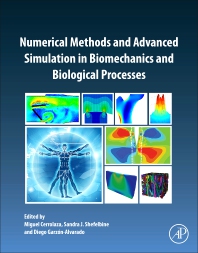
The dynamics of deformable liquid-filled bodies (e.g. droplets, capsules, lipid vesicles) suspended in a fluid flow is a fascinating fundamental problem with increasing relevance for technological applications, for example, in drug delivery, or designing lab-on-chip devices. In the present chapter we review two main families of lattice Boltzmann models for multi-component flows, their mechanical properties and transport phenomena, with special focus on their application to biofluidic problems, such as the dynamics, merging and breakup of microfluidic droplets and the motion of deformable membranes and vesicles under geometrical confinement.
-
Interfacial microcurrents in continuum-scale multi-component lattice Boltzmann equation hydrodynamics.
I. Halliday, S. V. Lishchuk, T. J. Spencer, K. Burgin, T. Schenkel.
Computer Physics Communications, 219, 286 (2017).
[abstract] [doi]We describe, analyse and reduce micro-current effects in one class of lattice Boltzmann equation simulation method describing immiscible fluids within the continuum approximation, due to Lishchuk et al. (2003). This model’s micro-current flow field and associated density adjustment, when considered in the linear, low-Reynolds number regime, may be decomposed into independent, superposable contributions arising from various error terms in its immersed boundary force. Error force contributions which are rotational (solenoidal) are mainly responsible for the micro-current (corresponding density adjustment). Rotationally anisotropic error terms arise from numerical derivatives and from the sampling of the interface-supporting force. They may be removed, either by eliminating the causal error force or by negating it. It is found to be straightforward to design more effective stencils with significantly improved performance.
Practically, the micro-current activity arising in Lishchuk’s method is reduced by approximately three quarters by using an appropriate stencil and approximately by an order of magnitude when the effects of sampling are removed.
-
On the structural polydispersity of random copolymers adsorbed at interfaces: Comparison of surface and bulk distributions.
S. V. Lishchuk, R. Ettelaie, T. Annable.
Molecular Physics, 115, 1343 (2017).
[abstract] [doi]Synthesis of random copolymers leads to a structurally polydispersed distribution of polymer chains, where one of the constituent monomers prefers residing on the interface, while the others have a tendency for remaining in the bulk. Previous studies have demonstrated the very strong dependence of the level of adsorption with the degree of blockiness and number of adsorbing residues of the chains. Using self-consistent field calculations, we obtain the distribution of the adsorbed copolymers and compare this with the bulk distribution of such chains. In our study, the whole range of structurally polydisperse chains in the distribution derived for a given random copolymer are simultaneously present and can compete with each other for adsorption. We show that the distribution of chains on the surface is grossly different to that in the bulk and is largely dominated by those rare chains at the tail end of the latter distribution.
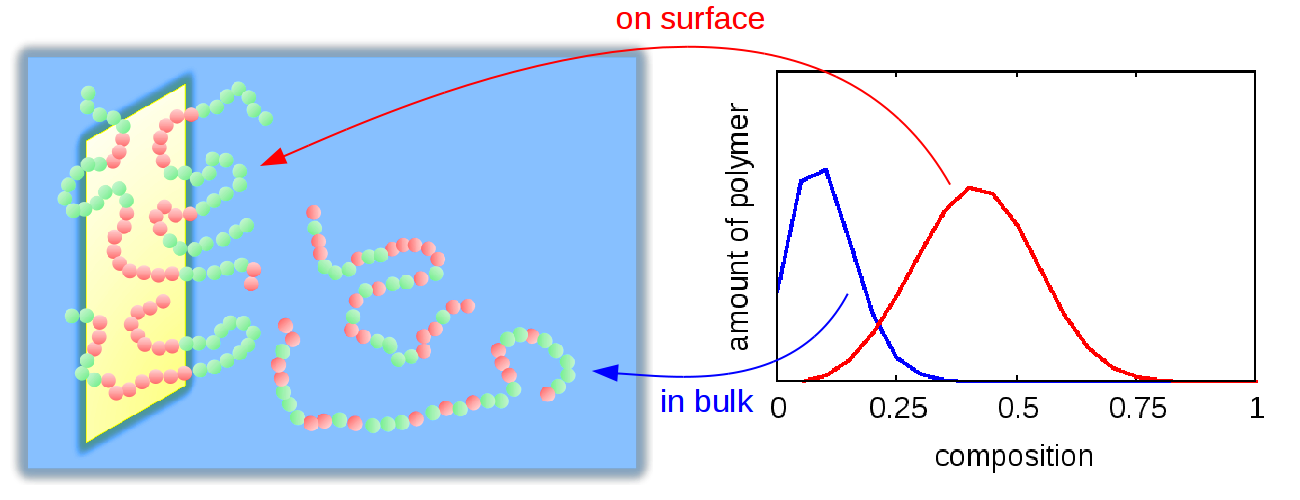
-
Novel food grade dispersants: Review of recent progress.
R. Ettelaie, A. Zengin, S. V. Lishchuk.
Current Opinion in Colloid & Interface Science, 28, 46 (2017).
[abstract] [doi]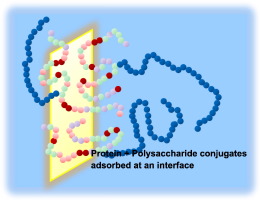
Many foreseen advances in the design of food structures, suitable for ever demanding nutrient delivery systems, tailored controlled release, microencapsulation and protection of active ingredients, require a generation of superior dispersants than those currently provided by proteins. While the most efficient structure for such dispersants is relatively easy to specify, in foods they cannot simply be synthetically manufactured. The review highlights several possible strategies for realising more efficient food colloid stabilisers and summarises the key recent progress for each approach, both experimentally and theoretically. The emphasis is on those methods that lead to macromolecularly adsorbed layers. Practical aspects apart, we also discuss a number of interesting fundamental questions that each approach raises.
-
Dilatational viscosity of dilute particle-laden fluid interface at different contact angles.
S. V. Lishchuk.
Physical Review E, 94, 063111 (2016).
[abstract] [doi]We consider a solid spherical particle adsorbed at a flat interface between two immiscible fluids and having arbitrary contact angle at the triple contact line. We derive analytically the flow field corresponding to dilatational surface flow in the case of a large ratio of dynamic shear viscosities of two fluids. Considering a dilute assembly of such particles we calculate numerically the dependence on the contact angle of the effective surface dilatational viscosity particle-laden fluid interface. The effective surface dilatational viscosity is proportional to the size and surface concentration of particles and monotonically increases with the increase in protrusion of particles into the fluid with larger shear viscosity.
-
Detachment force of particles with pinning of contact line from fluid bubbles/droplets.
S. V. Lishchuk, R. Ettelaie.
Langmuir, 32, 13040 (2016).
[abstract] [doi]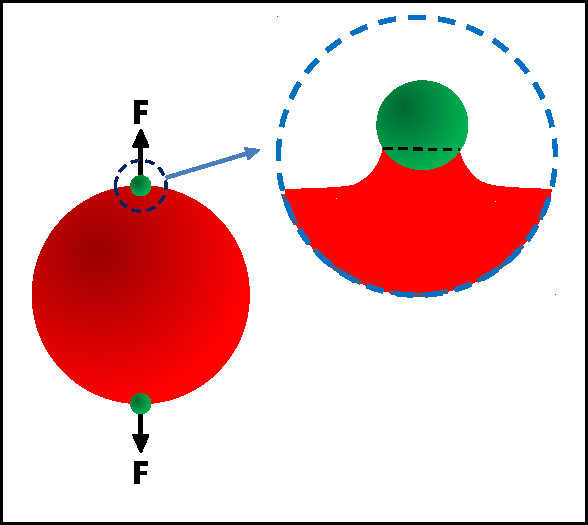
Deformation of a spherical droplet or bubble containing a pair of particles on its surface is considered when equal but opposite forces are applied to the particles. The particles are placed opposite each other, thus providing a symmetric problem that is more amenable to analytical treatment. We extend our previous calculations concerning such arrangements with constant contact angles to situations where it is the contact line now that is pinned on the surface of the particles. The force–displacement curves are calculated as the particles are pulled apart and are found to be linear for small displacements. However, it is also found that the “Hookean constant” for the pinned contact line problem is different from the one derived for systems with a constant contact angle, the constant being larger if the pinned line is at the equator of the particles.
-
Local membrane length conservation in two-dimensional vesicle simulation using a multicomponent lattice Boltzmann equation method.
I. Halliday, S. V. Lishchuk, T. J. Spencer, G. Pontrelli, P. C. Evans.
Physical Review E, 94, 023306 (2016).
[abstract] [doi]We present a method for applying a class of velocity-dependent forces within a multicomponent lattice Boltzmann equation simulation that is designed to recover continuum regime incompressible hydrodynamics. This method is applied to the problem, in two dimensions, of constraining to uniformity the tangential velocity of a vesicle membrane implemented within a recent multicomponent lattice Boltzmann simulation method, which avoids the use of Lagrangian boundary tracers. The constraint of uniform tangential velocity is carried by an additional contribution to an immersed boundary force, which we derive here from physical arguments. The result of this enhanced immersed boundary force is to apply a physically appropriate boundary condition at the interface between separated lattice fluids, defined as that region over which the phase-field varies most rapidly. Data from this enhanced vesicle boundary method are in agreement with other data obtained using related methods [e.g., T. Krüger, S. Frijters, F. Günther, B. Kaoui, and J. Harting, Eur. Phys. J. 222, 177 (2013)] and underscore the importance of a correct vesicle membrane condition.
-
Detachment force of particles from fluid droplets.
R. Ettelaie, S. V. Lishchuk.
Soft Matter, 11, 4251 (2015).
[abstract] [doi] [pdf]We calculate the deformation of a spherical droplet, resulting from the application of a pair of opposite forces to particles located diametrically opposite at the two ends of the droplet. The free-energy analysis is used to calculate the force–distance curves for the generated restoring forces, arising from the displacement of the particles relative to each other. While the logarithmic dependence of the “de Gennes–Hooke” constant on the particle to droplet size ratio, ν, is rather well known in the limit of very small ν, we find that for more realistic particle to droplet size ratios, i.e. ν=0.001 to 0.01, the additional constant terms of O(1) constitute a significant correction to previously reported results. We derive the restoring force constant to be 2πγ[0.5-ln(ν/2)]⁻¹, in perfect agreement with the exact semi-numerical analysis of the same problem. The deviation from the linear force–displacement behaviour, occurring close to the point of detachment, is also investigated. A study of the energy dissipated shows it to be an increasingly dominant component of the work done during the detachment of the particles, as ν decreases. This indicates the existence of a significantly higher energy barrier to desorption of very small particles, compared to the one suggested by their adsorption energy alone. The influence of the line tension on the detachment force is also considered. It is shown that where line tension is important, the contact angle is no longer a constant but instead alters with the displacement of the particles from their equilibrium positions.
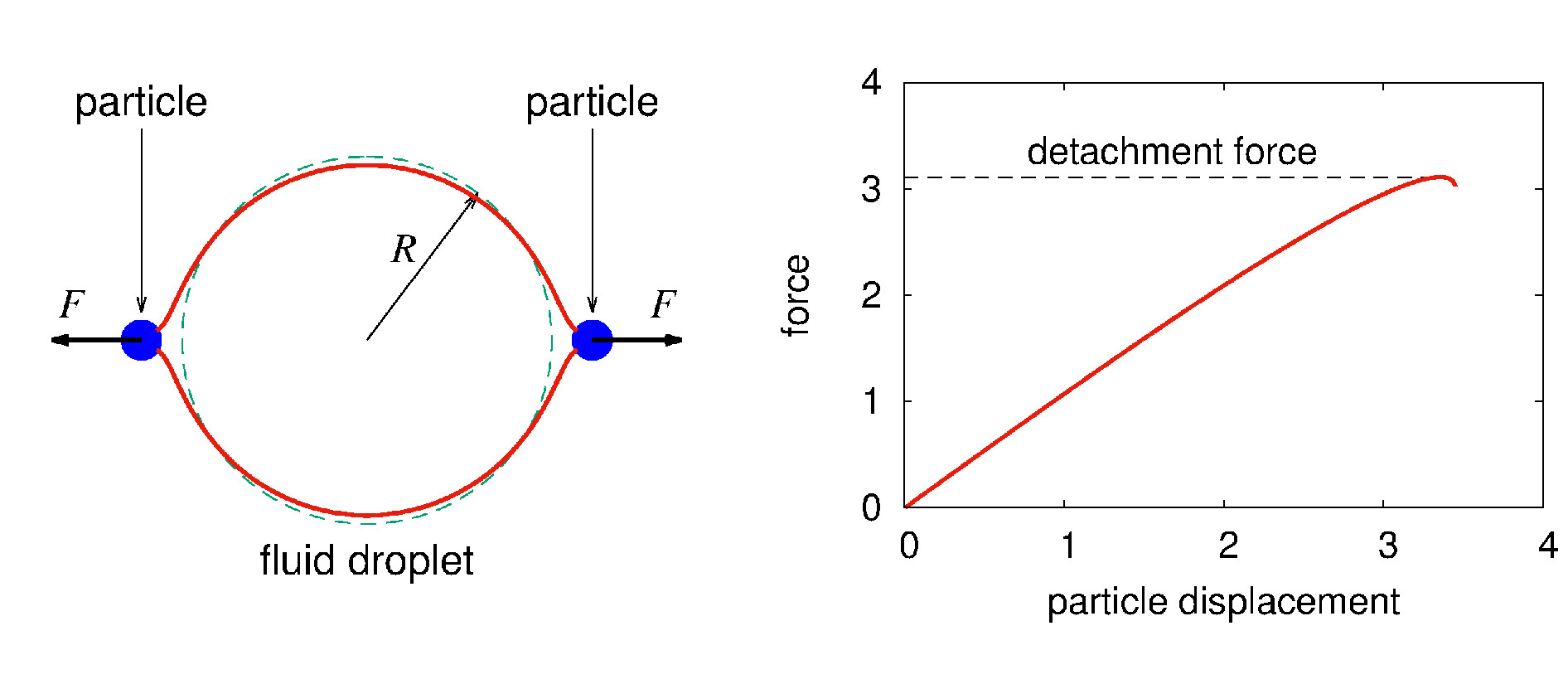
-
Effective surface dilatational viscosity of highly concentrated particle-laden interfaces.
S. V. Lishchuk.
Physical Review E, 90, 053005 (2014).
[abstract] [doi]The effective surface dilatational viscosity is calculated of a flat interface separating two immiscible fluids laden with half-immersed monodisperse rigid spherical non-Brownian particles in the limit of high particle concentration. The derivation is based upon the facts that (i) highly concentrated particle arrays in a plane form a hexagonal structure and (ii) the dominant contribution to the viscous dissipation rate arises in the thin gaps between neighboring particles.
-
Effective surface shear viscosity of an incompressible particle-laden fluid interface.
S. V. Lishchuk.
Physical Review E, 89, 043003 (2014).
[abstract] [doi]The presence of even a small amount of surfactant at the particle-laden fluid interface subjected to shear makes surface flow incompressible if the shear rate is small enough [T. M. Fischer et al., J. Fluid Mech. 558, 451 (2006)]. In the present paper the effective surface shear viscosity of a flat, low-concentration, particle-laden incompressible interface separating two immiscible fluids is calculated. The resulting value is found to be 7.6% larger than the value obtained without account for surface incompressibility.
-
The influence of the liquid slab thickness on the planar vapor–liquid interfacial tension.
S. Werth, S. V. Lishchuk, M. Horsch, H. Hasse.
Physica A: Statistical Mechanics and its Applications, 392, 2359 (2013).
[abstract] [doi]One of the long standing challenges in molecular simulation is the description of interfaces. On the molecular length scale, finite size effects significantly influence the properties of the interface such as its interfacial tension, which can be reliably investigated by molecular dynamics simulation of planar vapor–liquid interfaces. For the Lennard-Jones fluid, finite size effects are examined here by varying the thickness of the liquid slab. It is found that the surface tension and density in the center of the liquid region decreases significantly for thin slabs. The influence of the slab thickness on both the liquid density and the surface tension is found to scale with 1/S³ in terms of the slab thickness S, and a linear correlation between both effects is obtained. The results corroborate the analysis of A. Malijevský, G. Jackson, J. Phys.: Condens. Matter 24 (2012) 464121, who recently detected an analogous effect for the surface tension of liquid nanodroplets.
Highlights:
- Finite-size effects on fluid interfaces are examined by molecular simulation.
- The Janecek correction scheme is employed to account for long-range interactions.
- The vapor–liquid surface tension decreases significantly for thin planar slabs.
- The influence of the slab thickness S on the surface tension scales with 1/S³.
- Analogous results of Malijevsky and Jackson regarding droplets are corroborated.
-
Multiple component lattice Boltzmann equation for fluid-filled vesicles in flow.
I. Halliday, S. V. Lishchuk, T. Spencer, G. Pontrelli, C. M. Care.
Physical Review E, 87, 023307 (2013).
[abstract] [doi]We document the derivation and implementation of extensions to a two-dimensional, multicomponent lattice Boltzmann equation model, with Laplace law interfacial tension. The extended model behaves in such a way that the boundary between its immiscible drop and embedding fluid components can be shown to describe a vesicle of constant volume bounded by a membrane with conserved length, specified interface compressibility, bending rigidity, preferred curvature, and interfacial tension. We describe how to apply this result to several, independent vesicles. The extended scheme is completely Eulerian, and it represents a two-way coupled vesicle membrane and flow within a single framework. Unlike previous methods, our approach dispenses entirely with the need explicitly to track the membrane, or boundary, and makes no use whatsoever of computationally expensive and intricate interface tracking and remeshing. Validation data are presented, which demonstrate the utility of the method in the simulation of the flow of high volume fraction suspensions of deformable objects.
-
Modelling of the aluminium alloy Al 2024 from the microscale to the macroscale: intergranular corrosion.
R. Akid, S. V. Lishchuk, K. Worden, A. Bałkowiec, J. Michalski, K. J. Kurzydlowski.
“Aluminium alloy corrosion of aircraft structures” (Editors: J. A. DeRose, T. Suter, T. Hack, R. Adey), WIT press (2013).
[abstract] [publisher]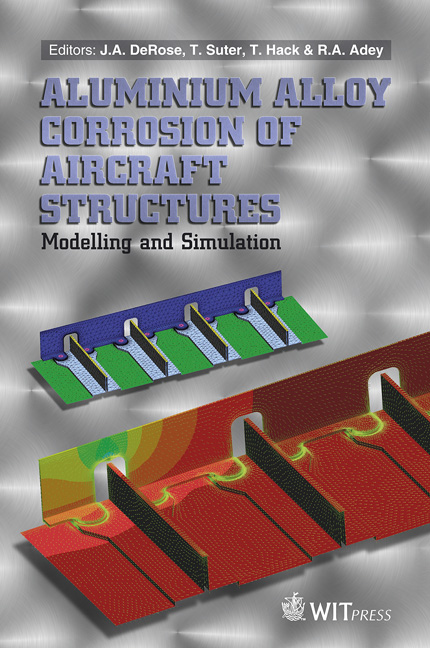
Aluminium-based alloys show good resistant to uniform (general) corrosion. However they are much more susceptible to various types of localised corrosion, in particular intergranular corrosion (IGC), where localised attack occurs along the grain boundaries leaving the grains themselves largely unaffected. In order to estimate the progress of such corrosion in a given sample, it is possible to generate a numerical model. While there has been much effort spent in the development of electrochemistry-based models, the use of grey and black-box models remains largely unexplored. Cellular Automata (CA) models that have recently been exploited to model the progression of uniform corrosion may be developed to address localised corrosion, more specifically IGC. A probabilistic approach is chosen because it enables the simulation of complex interactions by replacing the chemical processes by a discrete proxy.
-
Role of three-body interactions in formation of bulk viscosity in liquid argon.
S. V. Lishchuk.
Journal of Chemical Physics, 136, 164501 (2012).
[abstract] [doi] [pdf]With the aim of locating the origin of discrepancy between experimental and computer simulation results on bulk viscosity of liquid argon, a molecular dynamic simulation of argon interacting via ab initio pair potential and triple-dipole three-body potential has been undertaken. Bulk viscosity, obtained using Green-Kubo formula, is different from the values obtained from modeling argon using Lennard-Jones potential, the former being closer to the experimental data. The conclusion is made that many-body inter-atomic interaction plays a significant role in formation of bulk viscosity.
-
ms2: Ein Werkzeug zur Berechnung thermodynamischer Stoffeigenschaften mittels molekularer Simulation.
S. Deublein, B. Eckl, J. Stoll, S. V. Lishchuk, G. Guevara-Carrion, C. W. Glass, T. Merker, M. Bernreuther, H. Hasse, J. Vrabec.
Chemie Ingenieur Technik, 84, 114 (2012).
[abstract] [doi] [journal cover image]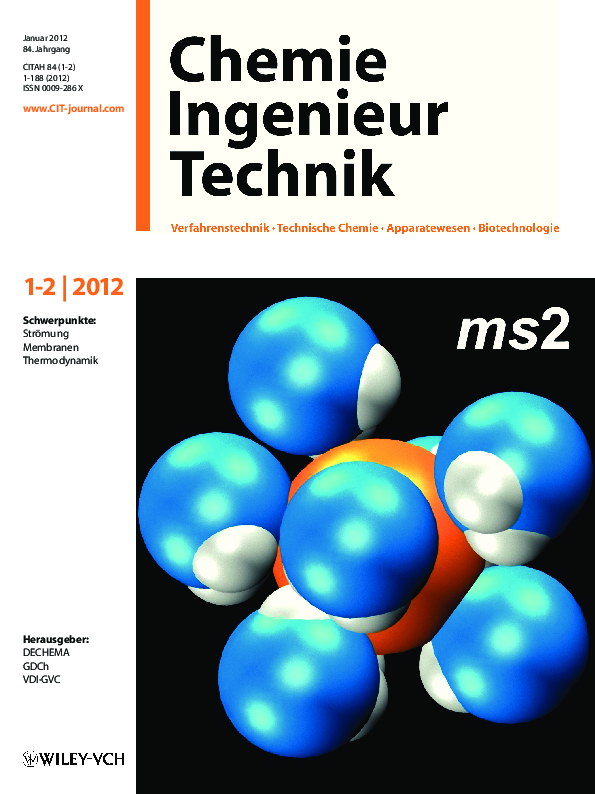
Dieser Beitrag stellt das molekulare Simulationsprogramm ms2 vor, das zur Berechnung thermodynamischer Stoffdaten von Fluiden im Gleichgewicht dient. Mit ms2 können Stoffdaten von Reinstoffen und Mischungen ermittelt werden, die aus kleinen, elektroneutralen Molekülen bestehen. Es lassen sich Molekulardynamik und Monte-Carlo-Simulationen durchführen. Zugängliche Stoffdaten sind unter anderem thermische und kalorische Eigenschaften, Dampf/Flüssigkeits-Gleichgewichte und Transportgrößen. ms2 ist optimiert auf kurze Antwortzeiten auf unterschiedlicher Hardware und einfache Bedienbarkeit. Hilfsprogramme unterstützen die Verwendung von ms2.
This work presents the molecular simulation program ms2 that is designed for the calculation of thermodynamic properties of fluids in equilibrium. With ms2, thermodynamic properties can be calculated for pure fluids and mixtures that consist of small electro-neutral molecules. Both molecular dynamics and Monte Carlo simulations can be performed. The calculation of thermal and caloric data for homogeneous states as well as vapor-liquid equilibria and transport properties is supported. ms2 is designed to achieve short response times on different hardware and straightforward handling. Feature tools facilitate the interpretation of input and output files.
-
ms2: A molecular simulation tool for thermodynamic properties.
S. Deublein, B. Eckl, J. Stoll, S. V. Lishchuk, G. Guevara-Carrion, C. W. Glass, T. Merker, M. Bernreuther, H. Hasse, J. Vrabec.
Computer Physics Communications, 182, 2350 (2011).
[abstract] [doi] [ms2 website] [wikipedia]This work presents the molecular simulation program ms2 that is designed for the calculation of thermodynamic properties of bulk fluids in equilibrium consisting of small electro-neutral molecules. ms2 features the two main molecular simulation techniques, molecular dynamics (MD) and Monte-Carlo. It supports the calculation of vapor–liquid equilibria of pure fluids and multi-component mixtures described by rigid molecular models on the basis of the grand equilibrium method. Furthermore, it is capable of sampling various classical ensembles and yields numerous thermodynamic properties. To evaluate the chemical potential, Widomʼs test molecule method and gradual insertion are implemented. Transport properties are determined by equilibrium MD simulations following the Green–Kubo formalism. ms2 is designed to meet the requirements of academia and industry, particularly achieving short response times and straightforward handling. It is written in Fortran90 and optimized for a fast execution on a broad range of computer architectures, spanning from single processor PCs over PC-clusters and vector computers to high-end parallel machines. The standard Message Passing Interface (MPI) is used for parallelization and ms2 is therefore easily portable to different computing platforms. Feature tools facilitate the interaction with the code and the interpretation of input and output files. The accuracy and reliability of ms2 has been shown for a large variety of fluids in preceding work.
Highlights:
- ms2 is an open source molecular simulation program for the calculation of thermodynamic properties.
- Accessible properties are thermal and caloric data, vapor–liquid equilibria and transport properties.
- ms2 is designed for a fast execution, while obtaining highly accurate results.
- Feature tools facilitate the simulation work with ms2.
-
Multi-scale interaction of particulate flow and the artery wall.
I. Halliday, M. A. Atherton, C. Care, M. W. Collins, D. Evans, P. C. Evans, D. R. Hose, A. Khir, C. S. König, R. Krams, P. Lawford, S. V. Lishchuk, G. Pontrelli, V. Ridger, T. J. Spencer, Y. Ventikos, D. C. Walker, P. N. Watton.
Medical Engineering & Physics, 33, 840 (2011).
[abstract] [doi]We discuss, from the perspective of basic science, the physical and biological processes which underlie atherosclerotic (plaque) initiation at the vascular endothelium, identifying the widely separated spatial and temporal scales which participate. We draw on current, related models of vessel wall evolution, paying particular attention to the role of particulate flow (blood is not a continuum fluid), and proceed to propose, then validate all the key components in a multiply-coupled, multi-scale modeling strategy (in qualitative terms only, note). Eventually, this strategy should lead to a quantitative, patient-specific understanding of the coupling between particulate flow and the endothelial state.
-
A cellular automaton model for predicting intergranular corrosion.
S. V. Lishchuk, R. Akid, K. Worden, J. Michalski.
Corrosion Science, 53, 2518 (2011).
[abstract] [doi]The cellular automata (CA) methodology is applied to the case of intergranular corrosion. Appropriate CA rules are generated which can reproduce and predict the advance of a corrosion front. The proposed model shows qualitative and quantitative agreement with experimental intergranular corrosion data obtained from an aluminium AA2024 alloy in chloride solutions.
Highlights:
- Cellular automata allows new approach to simulating intergranular corrosion.
- Intergranular corrosion of ‘real’ microstructures is simulated in 3D.
- Diffusion processes are modelled using a random walk process.
- Differential evolution algorithm is used to calibrate the adjustable parameters.
- Cellular automata may be further modified to include additional physical phenomena.
-
Contribution of H-bond vibrations to heat capacity of water.
S. V. Lishchuk, N. P. Malomuzh, P. V. Makhlaichuk.
Physics Letters A, 375, 2656 (2011).
[abstract] [doi]The origin of the anomalously large value of the heat capacity of liquid water is discussed. Comparing the temperature dependence of the heat capacities for water with those for argon and hydrogen sulfide, we separate contributions of the translational and rotational degrees of freedom. The residual part is considered as being caused by the specific contributions of the transversal vibrations of H-bonds. The estimate for the number of H-bonds per molecule is obtained from the analysis of this contribution. This estimate is in quite good agreement with the estimates which follow from the analysis of the specific volume, heat of evaporation, and kinematic shear viscosity.
Highlights:
- Different contributions to the heat capacity of liquid water are analyzed.
- Contributions of the translational and rotational degrees of freedom are separated.
- The contribution of the transversal vibrations of H-bonds is calculated.
- The number of H-bonds per molecule is estimated.
-
Why thermodynamic properties of normal and heavy water are similar to those of argon-like liquids?
S. V. Lishchuk, N. P. Malomuzh, P. V. Makhlaichuk.
Physics Letters A, 374, 2084 (2010).
[abstract] [doi]The Letter is devoted to the explanation of the argon-like behavior of the thermodynamic properties of water. It is shown that this phenomenon is caused by the averaged inter-particle potentials which form due to rotation of water molecules. The general structure of the averaged potentials is proposed. The physical nature for the considerable shift of the triple point of water in comparison with the one obtained by extrapolation in the homological series is discussed.
-
Self-consistent field theory simulation of block copolymer films adsorbed on surfaces of azimuthally symmetric particles.
S. V. Lishchuk.
Journal of Physics A: Mathematical and Theoretical, 42, 465401 (2009).
[abstract] [doi]A method is proposed for solving self-consistent field theory equations for thin block copolymer films adsorbed on a surface of axially symmetric particles. The method is applied to the case of thin diblock copolymer film adsorbed on a prolate spheroidal particle. Two-dimensional analogues of lamellar and cylindrical morphologies are observed.
-
Multi-scale interaction of flow and the artery wall.
I. Halliday, S. V. Lishchuk, M. A. Atherton, C. Care, M. W. Collins, D. Evans, P. C. Evans, D. R. Hose, A. Khir, R. Krams, P. Lawford, V. Ridger, Y. Ventikos, D. C. Walker, P. N. Watton.
Proceedings of the 2nd Micro and Nano Flows Conference (2009).
[abstract] [repository]We discuss, from the perspective of basic science, the physical and biological processes which underlie atherosclerotic (plaque) initiation at the vascular endothelium, identifying their widely separated spatial and temporal scales which participate. We draw on current, related models of vessel wall evolution, paying particular attention to the role of flow, and proceed to propose, then validate (in practical, qualitative terms, at least) a multiply coupled, multi-scale modeling strategy, which, eventually, aims at a quantitative, patient-specific understanding of the coupling between the flow and the endothelial state.
-
Effective surface viscosities of a particle-laden fluid interface.
S. V. Lishchuk, I. Halliday.
Physical Review E, 80, 016306 (2009).
[abstract] [doi]The Einstein formula for the effective shear viscosity of low Reynolds number suspension flows is generalized to the case of flat, low-concentration, particle-laden interfaces separating two immiscible fluids. The effective surface shear and dilational viscosities of this system is found to be ηs=5⁄3(η1+η2)Rϕ and ζs=5(η1+η2)Rϕ, correspondingly, where η1 and η2 are the shear viscosities of two bulk fluids and ϕ is the surface concentration of spherical particles of radius R. The formula is found to be in excellent agreement with data obtained using multicomponent lattice Boltzmann equation simulation.
-
Scattering of light on surfactant-laden liquid–liquid crystal interface.
S. V. Lishchuk.
Chemical Engineering Communications, 196, 854 (2009).
[abstract] [doi] [pdf]The spectrum of surface quasi-elastic light scattering (SQELS) on a surfactant-laden interface between nematic liquid crystal and isotropic fluid is calculated for the case when the surfactant film induces homeotropic anchoring of the nematic director. The result can be used for determination of the surface tension, compressional modulus, and a combination of the surface viscosity coefficients from the experimental SQELS data.
-
Saddle-splay modulus of a particle-laden fluid interface for hard disks.
S. V. Lishchuk.
Europhysics Letters, 85, 56001 (2009).
[abstract] [doi] [pdf]The scaled-particle theory equation of state for the two-dimensional hard-disk fluid on a curved surface is proposed and used to determine the saddle-splay modulus of a particle-laden fluid interface. The resulting contribution to saddle-splay modulus, which is caused by thermal motion of the adsorbed particles, is comparable in magnitude with the saddle-splay modulus of a simple fluid interface.
-
A cellular automaton based model for predicting intergranular corrosion in aerospace alloys.
S. V. Lishchuk, R. Akid, K. Worden.
Proceedings of EUROCORR–2008 “Managing corrosion for sustainability” (2008).
[abstract] [repository]The cellular automata (CA) model is proposed for predicting intergranular corrosion. The appropriate CA rules are generated which can reproduce and predict the advance of a corrosion front The proposed model shows qualitative and quantitative agreement with experimental data on an aluminium Al2024 alloy in chloride solutions.
-
The model of alkylphenol micelles bound to respective antibodies on the solid surface.
A. Tsargorodskaya, S. V. Lishchuk, A. Nabok.
Colloids and Surfaces A: Physicochemical and Engineering Aspects, 324, 117 (2008).
[abstract] [doi]The model of binding of micelles of nonylphenol molecules to respective antibodies immobilized on the solid surface is proposed. The actual dimensions of micelles obtained from AFM measurements were used in modelling and allowed to predict the shape of the micelle. An account of non-spherical shape of micelles and their simultaneous binding to several antibodies allows estimation of the micelle binding energy.
-
Model-based prognosis for intergranular corrosion.
S. V. Lishchuk, R. Akid, K. Worden.
“Structural health monitoring 2008” (Editors: T. Uhl, W. Ostachowicz, J. Holnicki-Szulc), DEStech Publications (2008).
[abstract] [publisher] [repository]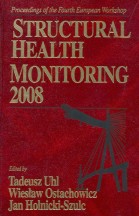
Among the advantages of Aluminium-based alloys for structural use is their corrosion resistance. However, while Aluminium alloys are highly resistant to uniform (general) corrosion, they are much more susceptible to types of localised corrosion, especially intergranular corrosion, which is a localised attack along the grain boundaries which leaves the grains themselves largely unaffected. In order to estimate the progress of such corrosion in a given sample, it is considered possible to generate a numerical model of some sort. While there has been much effort spent in the development of electrochemistry-based models, the use of grey and black-box models remains largely unexplored. One exception to this is the use of Cellular Automata (CA) models which have recently been exploited to model the progression of uniform corrosion. The object of the current paper is to apply the CA methodology to the case of intergranular corrosion. The first phase of the work has been concerned with generating appropriate CA rules which can qualitatively reproduce observed physics, and this work is reported here. A model is proposed which shows qualitative agreement with experimental data on the advance of the corrosion front.
-
Multicomponent lattice Boltzmann method for fluids with a density contrast.
S. V. Lishchuk, I. Halliday, C. M. Care.
Physical Review E, 77, 036702 (2008).
[abstract] [doi]We present and verify a multicomponent lattice Boltzmann simulation scheme for two immiscible and incompressible fluids with a large density contrast. Our method is constructed from a continuum approximation description of a single inhomogeneous, and essentially incompressible, fluid. The equations that arise from this analysis are mapped onto an established multicomponent lattice Boltzmann method. The approach avoids the computational expense of a numerical solution of the fluid pressure field in a separate step. We present results obtained with our model which validate the initial assumptions and verify correct static and dynamic operation of the model up to a fluid density contrast ratio of more than 500. The paper concludes with an example that illustrates the potential utility of the approach by modeling a gas bubble rising under gravity and breaking through a free surface.
-
Role of the orientation disorder in the formation of fragility of glassy water and glycerol-like liquids.
S. V. Lishchuk, T. V. Lokotosh, S. Magazù, N. P. Malomuzh, F. Migliardo.
Physical Review E, 76, 061504 (2007).
[abstract] [doi]The role of H bonds in the formation of the fragility and dielectric properties of highly viscous liquids is investigated. The heuristic supposition about the proportionality between the logarithm of the shear viscosity and oscillatory contributions to the mean-square displacement of a molecule is presented. Concrete calculations are carried out for the H-bond subsystem of the two-dimensional model lattice water. The conjecture on the interrelation between the phase transition in the subsystem of H bonds and the glassification point is formulated. It is shown that (i) the glassification temperature is proportional to the H-bonding energy and (ii) the fragilities of glycerol-like liquids differ from each other as a consequence of distinct interaction energies between H bonds. The existence of a close connection between the fragility parameter and dielectric permittivity is established.
-
Waves at surfactant-laden liquid–liquid crystal interface.
S. V. Lishchuk.
Physical Review E, 76, 011711 (2007).
[abstract] [doi]A theoretical study is presented of surface waves at a monomolecular surfactant film between an isotropic liquid and a nematic liquid crystal for the case when the surfactant film is in the isotropic two-dimensional fluid phase and induces homeotropic (normal to the interface) orientation of the nematic director. The dispersion relation for the surface waves is obtained, and different surface modes are analyzed with account being taken of the anchoring induced by the surfactant layer, the curvature energy of the interface, and the anisotropy of the viscoelastic coefficients. The dispersion laws for capillary and dilatational surface modes retain structure similar to that in isotropic systems, but involve anisotropic viscosity coefficients. Additional modes are related to relaxation of the nematic director field due to anchoring at the interface. The results can be used to determine different properties of nematic-surfactant-isotropic interfaces from experimental data on surface light scattering.
-
Equation of state of the hard-disk fluid on a sphere from Percus-Yevick equation.
S. V. Lishchuk.
Physica A: Statistical Mechanics and its Applications, 369, 266 (2006).
[abstract] [doi]The Percus–Yevick equation is solved numerically for hard disks on a sphere. The effect of curvature of the hosting surface is calculated, and an empirical correction to the equation of state is proposed.
-
A deformable elastic membrane embedded in a lattice Boltzmann fluid.
S. V. Lishchuk, C. M. Care.
arXiv:cond-mat/0607382 (2006).
[abstract] [doi]A method is described for embedding a deformable, elastic, membrane within a lattice Boltzmann fluid. The membrane is represented by a set of massless points which advect with the fluid and which impose forces on the fluid which are derived from a free energy functional with a value which is dependent upon the geometric properties of the membrane. The method is validated in two dimensions with a free energy functional which imposes the constraint of constant membrane length, constant enclosed area, a bending rigidity and a preferred curvature. The method is shown to recover the expected equilibrium shape in the absence of flow and deformation in the presence of an applied shear flow. The method may have applications in a number of mesoscopic simulations, including discrete models of blood cells.
-
Shear viscosity of bulk suspensions at low Reynolds number with the three-dimensional lattice Boltzmann method.
S. V. Lishchuk, I. Halliday, C. M. Care.
Physical Review E, 74, 017701 (2006).
[abstract] [doi]We report three-dimensional parallel Lagrangian particle simulations using the lattice Boltzmann method, conducted at a low Reynolds number. Using modified Lees-Edwards boundary conditions and directly calculated viscous dissipation, we show that it is possible to recover excellent agreement with the Einstein viscosity formula in the low concentration limit and to predict viscosity corrections for larger concentrations.
-
Dielectric permittivity of glycerol in the high viscosity region.
I. V. Blazhnov, N. P. Malomuzh, S. V. Lishchuk.
Chemical Physics Letters, 418, 230 (2006).
[abstract] [doi]The temperature dependence of the quasistatic dielectric permittivity of highly viscous glycerol is considered in terms of the approach developed in the work [I.V. Blazhnov, N.P. Malomuzh, S.V. Lishchuk, J. Chem. Phys. 121 (2004) 6435]. The microinhomogeneous structure of supercooled glycerol and the frequency dispersion of dielectric permittivity play substantial role in its description. The temperature dependence of the static dielectric permittivity of liquid that surrounds nuclei is determined. The temperature dependencies of the effective polarizability and the mean square value of the dipole moment of molecules in liquid that surrounds nuclei are discussed.
-
Properties of the H-bond network for two-dimensional lattice water model.
S. V. Lishchuk, T. V. Lokotosh, N. P. Malomuzh.
Journal of Chemical Physics, 122, 244504 (2005).
[abstract] [doi]A microscopic Hamiltonian of the hydrogen-bond network in two-dimensional lattice water is proposed, which describes the formation and disruption of the H bonds, their bending, and which satisfies the Bernal–Fowler rules [J. D. Bernal and R. H. Fowler, J. Chem. Phys. 1, 515 (1933)]. The thermodynamic properties of the H-bond network are studied using the method of many-particle irreducible distribution functions, which is a generalization of the Kikuchi cluster approach [R. Kikuchi, Phys. Rev. 81, 988 (1951)] and the Bethe–Peierls quasiactivities method [H. A. Bethe, Prog. R. Soc. A 150, 552 (1935)]. The temperature dependencies of the average number of H bonds per molecules, the contribution of the H bonds into the heat capacity of the system, and the parameters describing the correlations between the states of molecules on the neighboring sites are investigated. It is shown that depending on the magnitude of the interaction between the H bonds in the H-bond subsystem either smooth or sharp first-order phase transition can occur. The role of different factors in the formation of the properties of the H-bond network is discussed.
-
Comment on “Fluctuations of elastic interfaces in fluids: Theory, lattice-Boltzmann model, and simulation”.
S. V. Lishchuk, C. M. Care.
Physical Review E, 71, 053201 (2005).
[abstract] [doi]The formulas for the force exerted by the interface upon the fluids, given by Stelitano and Rothman [Phys. Rev. E 62, 6667 (2000)] are corrected.
-
Temperature dependence of density, thermal expansion coefficient and shear viscosity of supercooled glycerol as a reflection of its structure.
I. V. Blazhnov, N. P. Malomuzh, S. V. Lishchuk.
Journal of Chemical Physics, 121, 6435 (2004).
[abstract] [doi]The relationship of the microstructure of supercooled, highly viscous glycerol to the temperature dependence of its density, thermal expansion coefficient, and shear viscosity are discussed. The character of this temperature dependence at the transition from low viscosity state to the solidamorphous state(solidified state without nuclei) is described with help of function ψ, which can be interpreted as the effective number of degrees of freedom responsible for the change of viscosity of glycerol over a broad range; these degrees of freedom are those related to the α-relaxation process. It is shown that the change in effective activation energy of the viscosity is completely determined by the parameter ψ. The change in the shear viscosity of glycerol due to the influence of the solid-phase nuclei is considered. It is shown that the introduction of the parameter φ, equal to the specific volume occupied by the nuclei of the solid phase, together with ψ provides a natural explanation of the temperature dependence of density and thermal expansion coefficients of glycerol in its liquid,solidamorphous, glassy, and crystal states. The peculiarities of the temperature dependence of φ(T) and ψ(T) for glycerol and o-terphenyl are compared.
-
Shape of an isotropic droplet in a nematic liquid crystal: the role of surfactant.
S. V. Lishchuk, C. M. Care.
Physical Review E, 70, 011702 (2004).
[abstract] [doi]We investigate theoretically, and numerically, the shape of a droplet of an isotropic fluid immersed in a nematic liquid crystal in the presence of an interfacial layer of surfactant; the droplet size is assumed to be small compared to the extrapolation length of the nematic and homeotropic alignment is favored by the anchoring energy at the nematic-isotropic interface. In a certain range of droplet sizes, the droplets are found to be lens shaped with the rotation axis aligned along the imposed director field and the aspect ratio dependent upon the ratio of anchoring strength and surface tension coefficients. For anchoring strengths large compared to the surface tension, the curvature of the edge of lens is controlled by the bending rigidity of surfactant.
-
A lattice-Boltzmann scheme for a nematic-isotropic interface.
S. V. Lishchuk, C. M. Care, I. Halliday.
Journal of Physics: Condensed Matter, 16, S1931 (2004).
[abstract] [doi]A lattice Boltzmann (LB) model of an interface between a nematic and an isotropic fluid is presented. The method is used to study, in two dimensions, the properties of a deformable colloidal droplet of an isotropic fluid suspended in a nematic matrix. The isotropic fluid is modelled by a standard lattice Bhatnagar–Gross–Krook (LBGK) scheme. The LB model of the nematic is a modified LBGK scheme in which a tensor density is used to recover the variable order parameter nemato-dynamics scheme proposed by Qian and Sheng. The interface between the two fluids is modelled by introducing appropriate forcing at the interface. The stress balance is achieved using an extension of a method proposed by Lishchuk et al, and the torque balance is achieved with an appropriate surface molecular field. The resulting interface algorithm recovers the macroscopic equations developed by Rey. Results are presented for the dependence of the shape of the droplet and the nematic defects upon the surface tension and the anchoring strength. A discussion is also presented of the effect of curvature rigidity on the droplet shape.
-
Generalized lattice Boltzmann algorithm for the flow of a nematic liquid crystal with variable order parameter.
C. M. Care, I. Halliday, K. Good, S. V. Lishchuk.
Physical Review E, 67, 061703 (2003).
[abstract] [doi]A lattice Boltzmann (LB) scheme is described, which recovers the equations developed by Qian-Sheng for the hydrodynamics of a nematic liquid crystal with a tensor order parameter. The standard mesoscopic LB scalar density is generalized to a tensor quantity and the macroscopic momentum, density, and tensor order parameter are recovered from appropriate moments of this mesoscopic density. A single lattice Boltzmann equation is used with a direction dependent Bhatnagar, Gross, and Krook (BGK) collision term, with additional forcing terms to recover the antisymmetric terms in the stress tensor. A Chapman-Enskog analysis is presented, which demonstrates that the Qian-Sheng scheme is recovered, provided a lattice with sixth-order isotropy is used. The method is validated against analytical results for a number of cases including flow alignment of the order tensor and the Miesowicz viscosities in the presence of an aligning magnetic field. The algorithm accurately recovers the predicted changes in the order parameter in the presence of aligning flow, and magnetic, fields. Preliminary results are given for an extension of the method to model the interface between isotropic and nematic fluids.
-
Lattice Boltzmann algorithm for surface tension with greatly reduced microcurrents.
S. V. Lishchuk, C. M. Care, I. Halliday.
Physical Review E, 67, 036701 (2003).
[abstract] [doi]We present an algorithm for inserting an interface between the immiscible phases of a multicomponent lattice Boltzmann fluid which is based solely upon the appropriate continuum physics: stress boundary conditions and continuity of velocity. Results are presented for the algorithm when applied to static, neutrally buoyant drops. It is shown that the present algorithm gives a significant reduction in the spurious velocities which are reported for previous schemes and a concomitant improvement in the isotropy of the interface.
-
Lekner summation of dipolar interaction in quasi-two-dimensional simulations.
S. V. Lishchuk.
Molecular Physics, 100, 3789 (2002).
[abstract] [doi]The Lekner method for calculation of electrostatic interactions in periodically replicated simulation cells is extended to quasi-two-dimensional systems of particles with dipolar interactions. The electric field, potential energy, forces and torques are expressed through rapidly converging series of modified Bessel functions. The method contains no arbitrary parameters, and has no limitations on the simulation box width.
-
Velocity distribution of water molecules in pores under microwave electric field.
S. V. Lishchuk, J. Fischer.
International Journal of Thermal Sciences, 40, 717 (2001).
[abstract] [doi]In order to understand the transport of water in pores under the influence of a microwave electric field the velocity distribution function of the water molecules is thought to be a key quantity. First, bulk water under the influence of an alternating electric field is studied by using a kinetic equation. As rotation occurs on a faster time scale and translation on a slower time scale it is argued that the velocity distribution for the bulk water is a Maxwell–Boltzmann distribution. Next, the non-equilibrium molecular dynamics simulation method is applied to study the behaviour of TIP3P water molecules under microwave electric field in a slit pore with thermostated walls. The water heats up till it reaches a steady state temperature. It is found that in the transient process as well as in the steady state the velocity distribution function is a Maxwell–Boltzmann distribution for the corresponding temperature. Hence, there is no convective mass transport due to a direct influence of the electric field.
-
Cluster approach to the problems of diffusion and viscosity in supercooled states of glycerol-like liquids.
S. V. Lishchuk, N. P. Malomuzh.
Chemical Physics Letters, 309, 307 (1999).
[abstract] [doi]To explain the temperature dependence of self-diffusion coefficients, static shear viscosity, and electrical conductivity of highly viscous electrolytes, the cluster representations developed by the authors are used. The interconnection of the enumerated transport coefficients with the most important kinetic characteristic of supercooled states — the lifetime of weakly bound clusters — is established. Internal self-consistency of the proposed formulas and their accord with experimental results is discussed. Interpretation of Vogel–Tamman–Fulcher temperature relationship is given.
-
Clusterization in supercooled states of glycerol-like liquids and its manifestations in different phenomena.
S. V. Lishchuk, N. P. Malomuzh.
Journal of Chemical Physics, 106, 6160 (1997).
[abstract] [doi]The present work is devoted to investigation of the temperature and frequency dependencies of the different relaxing values in highly-viscous glycerol-like liquids. The consideration is based on microinhomogeneous structure conception, allowing us to give the consecutive explanation to both the thermodynamic and kinetic properties. The main attention is paid to analysis of heat capacity, dielectrical permeability and longitudinal sound velocity. The influence of measuring time and preparation one of highly-viscous states on observed values are discussed.
-
Определение параметров спектральных линий молекулярного рассеяния света с помощью регуляризованных частотных моментов.
С. В. Лищук, Н. П. Маломуж, Ш. Ф. Файзуллаев, С. А. Османов.
Ўзбекистон физика журнали, 3, 41 (1997).
[abstract] [1st page]Лоренц типидаги секин камаювчи спектрал функциялар ҳам тўла тўплами яхши аниқланадиган танланган частота моментлари ёрдамида спектрал чизиқлар параметрларини аниқлашнинг янги, бевосита услуби баён этилади. Танланган частота моментлари спектрал чизиқларнинг интеграл характеристикаси бўлганлиги туфайли тасодифий хатоликларга унчи сезгир эмас. Таклиф этилаётган услуб бензол иккиланган ўриндошларинда анизотропия релаксация вақтини аниқлаш учун бир ёки бир неча лоренцианлар суперпозициясидан иборат контурларга нисбатан кўлланилган.
A new direct method of determination of spectral line parameters is expounded by means of regularized frequency moments, complete set of which is well defined even for slowly declined spectral functions of Lorentz type. Regularized frequency moments are integral properties of spectral lines and therefore they are least sensitive to random errors. As an illustration the developped method was applied to contoures corresponded to one or superposition of several Lorenzians for determination of relaxation time of anisotropy of disubstituted benzene molecules.
-
Рівноважні та нерівноважні властивості сильновʼязких рідин типа гліцерину
С. В. Лищук.
Дис… канд. фіз.-мат. наук: 01.04.02 / Одеський держ. ун-т ім. І. І. Мечникова. — О., 1997. — 131л.
[annotation] [synopsis]В диссертации исследуется природа равновесных и неравновесных свойств сильновязких жидкостей типа глицерина. Детально изучаются температурная и частотная зависимости теплоёмкости, диэлектрической проницаемости, вязко-упругих модулей. Рассмотрение основывается на предположении о микронеоднородном строении переохлаждённых состояний сильновязких жидкостей. Предложены новые методы определения времени колебательной релаксации и отделения аппаратных эффектов. Проведено всестороннее сравнение с экспериментальными данными.
The nature of equilibrium and non-equilibrium properties of highly viscous glycerol-like liquids is investigated. The temperature and frequency dependencies of heat capacity, dielectric permeability, viscoelastic moduli are studied. The consideration is based on the assumption about microinhomogeneous structure of supercooled states for highly-viscous liquids. The new methods for determination of vibrational relaxation time and the separation of instrumental effects are proposed. The comprehensive comparison with experimental data is made.
-
Особенности спектров молекулярного рассеяния света в сильновязких жидкостях типа глицерина.
С. В. Лищук, Н. П. Маломуж.
Журнал физической химии, 70, 404 (1996).
English translation:
The spectra of molecular light scattering in high-viscosity glycerol-like liquids.
S. V. Lishchuk, N. P. Malomuzh.
Russian Journal of Physical Chemistry, 70, 369 (1996).
[abstract] [pdf]Исследованы механизмы формирования тонкой структуры спектров поляризованной и деполяризованной составляющух молекулярного рассеяния света в сильновязких жидкостях. Рассмотрены температурные зависимости параметров спектров. Обсуждение проведено на основании концепции о микронеоднородном строении переохлажденных состояний сильновязких жидкостей.
The mechanisms of formation of fine structures in the spectra of the polarized and depolarized components of molecular light scattering in high-viscosity liquids are studied. The temperature dependences of spectral parameters are examined. The results are treated in terms of the concept of a microheterogeneous structure of supercooled high-viscosity liquids.
-
Температурная зависимость релаксирующих параметров переохлажденных жидкостей типа глицерина.
С. В. Лищук, Н. П. Маломуж.
Журнал физической химии, 69, 1694 (1995).
English translation:
Influence of temperature on relaxing parameters for supercooled glycerollike liquids.
S. V. Lishchuk, N. P. Malomuzh.
Russian Journal of Physical Chemistry, 69, 1539 (1995).
[abstract]Обсуждена частотная дисперсия теплоемкости, диэлектрической проницаемости и скорости звука в сильновязких состояниях глицериноподобных жидкостей. Особенное внимание уделено температурным зависимостям предельно-низкочастотных значений указанных величин, весьма чувствительных к предположению о существовании сильносвязанных кластеров.
The frequency dispersion of the specific heat, dielectric constant, and sound velocity for glycerollike liquids in highly viscous states is discussed. Particular attention is paid to the influence of temperature on these parameters in the low-frequency limit; they are found to be highly sensitive to the postulated existence of the strongly bound clusters.
-
Релаксационные процессы в переохлажденном глицерине и их проявление в оптических экспериментах.
С. В. Лищук.
Труди 2-ої всеукраїнської конференції молодих вчених, сс. 47–56 (1995).
-
The peculiarities of molecular and stimulated impulsive light scattering in supercooled states of glycerol-like liquids.
S. V. Lishchuk, N. P. Malomuzh.
Journal of Molecular Structure, 348, 205 (1995).
[abstract] [doi]Fine structure of molecular and stimulated impulsive light scattering spectra is discussed in frames of approach based on representation of microinhomogeneous structure of highly viscous glycerol-like liquids.
-
Особенности вынужденного импульсного рассеяния света в переохлажденном глицерине.
С. В. Лищук, Н. П. Маломуж.
Журнал физической химии, 69, 110 (1995).
English translation:
Specific features of induced pulsed-light scattering in supercooled glycerol.
S. V. Lishchuk, N. P. Malomuzh.
Russian Journal of Physical Chemistry, 69, 98 (1995).
[abstract]Исследованы физические параметры оптического сигнала, формирующегося в глицерине под действием интенсивного импульсного излучения. Рассмотрение основано на концепции о микронеоднородном строении переохлажденных сильновязких состеояний глицериноподобных жидкостей. Проведено детальное сравнение с экспериментальными данными.
The physical parameters of the optical signal generated in glycerol under the action of intense pulsed radiation are studied. The phenomenon is analyzed using the concept of a microheterogeneous structure of supercooled high-viscosity states of glycerol-like liquids. A detailed comparison with experiment is given.
-
Определение времени колебательной релаксации жидкостей с помощью соотношения Ландау-Плачека.
С. В. Лищук, Н. П. Маломуж, Ш. Ф. Файзуллаев.
Фізика рідкого стану, 21, прийнято до друку (1993).
English translation:
Determination of vibrational relaxation time of liquids with help of Landau-Placzek ratio.
S. V. Lishchuk, N. P. Malomuzh, Sh. F. Faizullaev.
[abstract] [preprint]A new method of determination of the vibrational relaxation time of liquids based on using the Landau-Placzek ratio is proposed. The influence of molecular anisotropy effects is taken into account. The effectiveness of the method is illustrated on the example of substituted benzene.